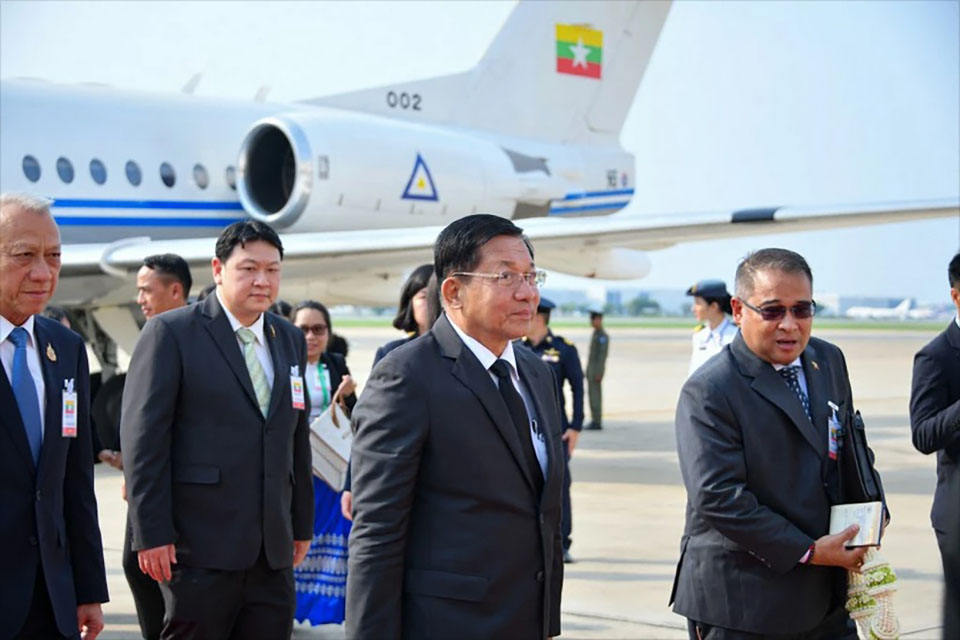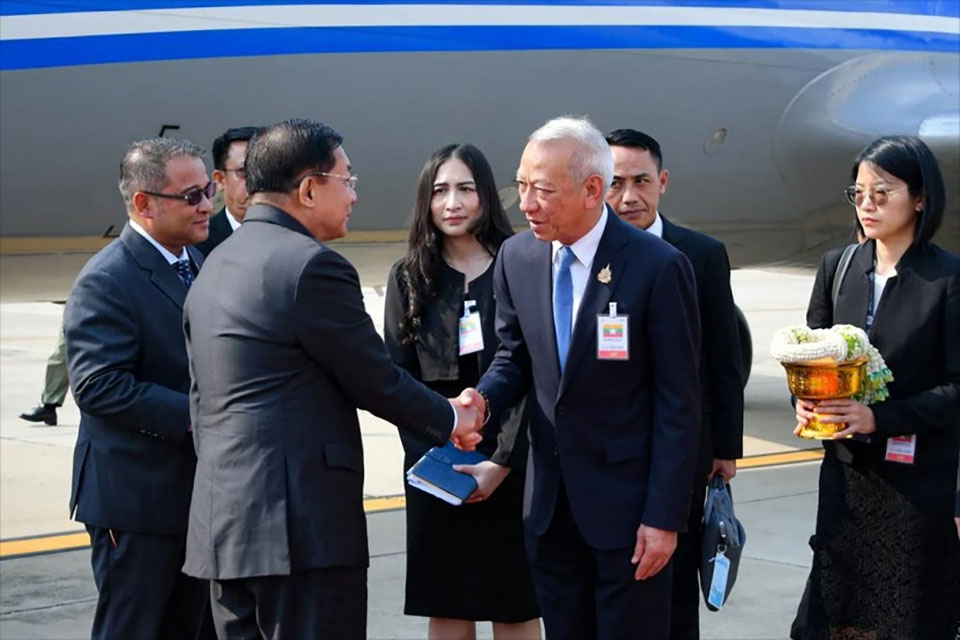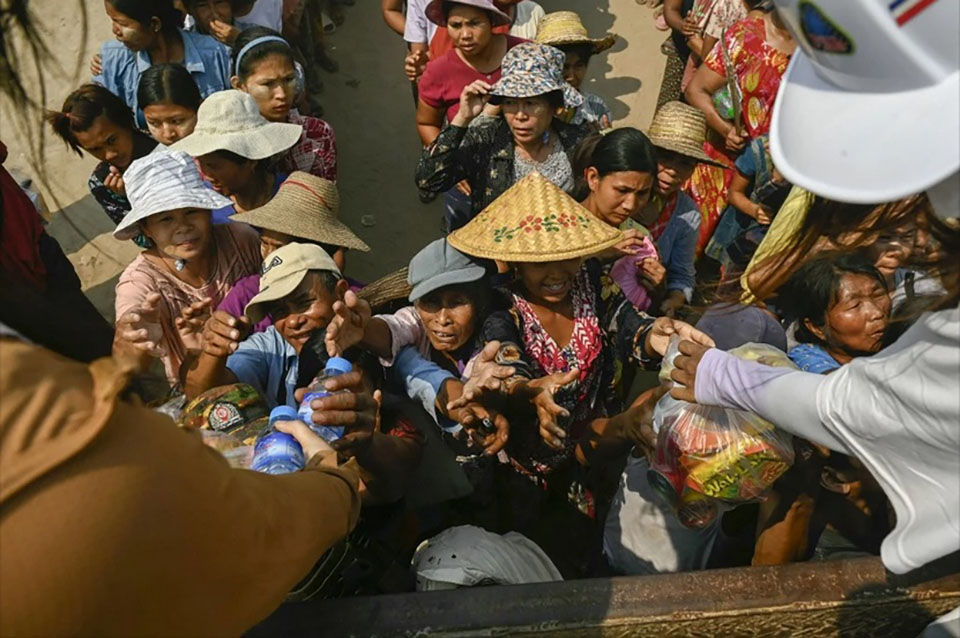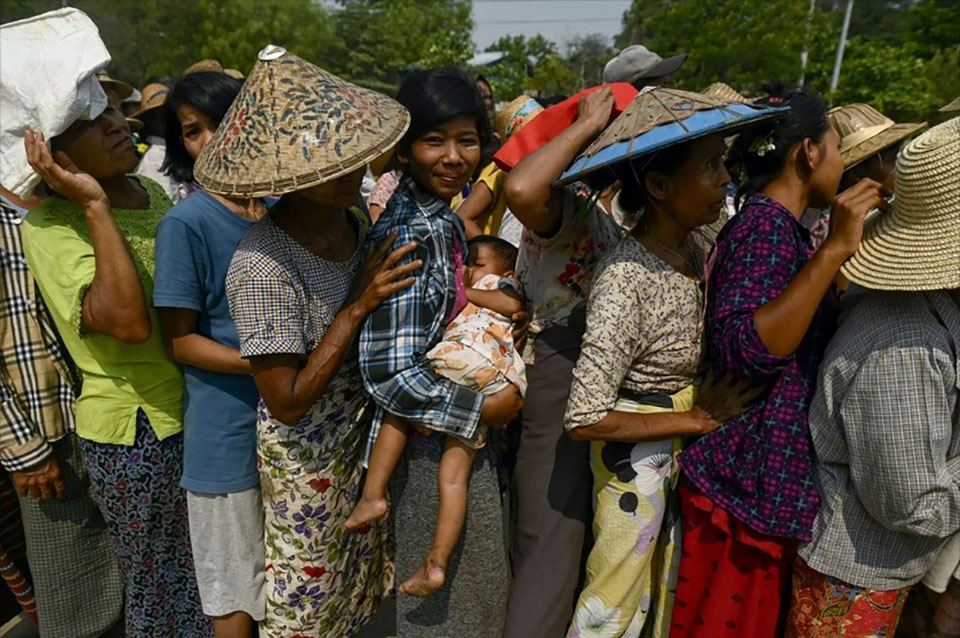
BANGKOK, Thailand – Myanmar’s Senior General Min Aung Hlaing arrived in Bangkok on Thursday (April 3) to attend the BIMSTEC Summit, despite an ongoing ASEAN policy of excluding Myanmar’s military leadership. His visit coincides with a devastating earthquake in Myanmar, where the death toll has now surpassed 3,000 people.
Min Aung Hlaing will participate in discussions with leaders from the Bay of Bengal Initiative for Multi-Sectoral Technical and Economic Cooperation (BIMSTEC), focusing on disaster response following last week’s 7.7-magnitude earthquake.
Upon arrival, the Myanmar junta leader was escorted to the Shangri-La Hotel in Bangkok, where the summit is being held under tight security, according to AFP reporters.
Several countries have dispatched relief aid and rescue teams to Myanmar since the disaster struck. However, severely damaged infrastructure, unstable communication networks, and ongoing civil conflict have hindered rescue and relief efforts.
Humanitarian Crisis in Myanmar
Myanmar has been embroiled in conflict since 2021, when Min Aung Hlaing’s military toppled the civilian government led by Aung San Suu Kyi. Even in the aftermath of the earthquake, fighting between the junta and resistance forces continued. However, on April 2, both sides agreed to a temporary ceasefire to facilitate relief efforts.
In Sagaing, located less than 15 km from the quake’s epicenter, hundreds of survivors have been lining up for emergency aid, AFP reported. The roads leading to the region are congested with relief convoys organized by civilian volunteers delivering supplies from across the country.
The devastation in Sagaing is extensive, with the UNDP Myanmar representative stating that 80% of the buildings in the town have been damaged, with 50% suffering severe destruction. The main food market is unusable, hospitals are overwhelmed, and unstable infrastructure has forced medical teams to treat patients outdoors under 40°C heat.

“We have children, pregnant women, and injured victims here, but there aren’t enough medical supplies,” a UNDP official said. “More than 3 million people could be affected by this disaster.”
Even nearly a week after the earthquake, many locals report receiving little to no assistance.
“We have a well for drinking water, but no fuel to run the pump. We don’t know how much longer we’ll be without electricity,” said E Thika, a 63-year-old Buddhist nun, who has been distributing aid. Many survivors remain homeless, sleeping outdoors due to the collapse or severe damage of their houses.
“Kind-hearted people passing by on the roads have been donating food and water to us,” she added. “We rely on their generosity.”
BIMSTEC Summit & Diplomatic Implications
The BIMSTEC group consists of Bangladesh, Bhutan, India, Myanmar, Nepal, Sri Lanka, and Thailand, with all leaders expected to attend the summit in Bangkok. As the host nation, Thailand has proposed a joint statement on disaster relief following the earthquake.
Min Aung Hlaing’s participation marks a diplomatic victory for Myanmar’s junta, as it defies ASEAN’s stance of excluding Myanmar’s military leaders from major summits.
His arrival in Bangkok also coincides with the Myanmar junta’s latest casualty report, confirming 3,085 deaths, 341 missing, and 4,715 injured from the earthquake.
Even in Bangkok, hundreds of kilometers from the epicenter, the tremors caused damage, with 22 confirmed deaths and over 70 people still missing due to collapsed buildings. Rescue operations continue, though hopes of finding more survivors are dwindling.












